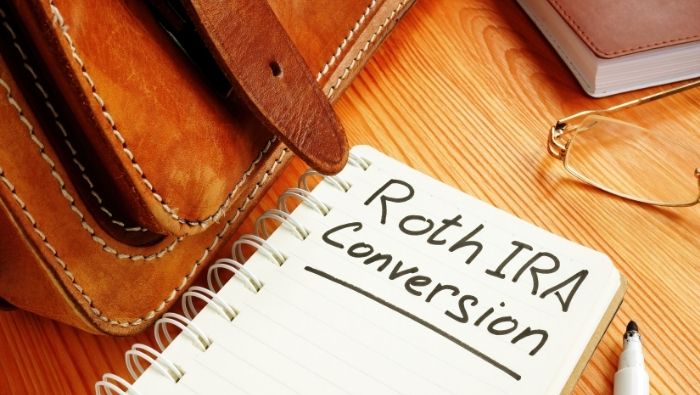Roth Conversions and Recharacterizations
by Rick Kahler

If you do Roth conversions and recharacterizations the right way, you can reduce your tax bill. Here’s how.
It is best to consider doing a Roth conversion when your current tax bracket declines temporarily below the bracket you expect to be in when you will need to make withdrawals.
Examples of two ways you might suddenly find yourself in a lower tax bracket are losing a job or having a bad year in a business you own. The strategy is to estimate how much additional income would bring you to the top of the lower income tax bracket, then convert that amount from a traditional IRA into a Roth IRA. You will pay tax on the amount converted just as if you had made a withdrawal from the IRA, without the early withdrawal (before age 59 1/2) penalty of 10%. To make this strategy worthwhile, it is very important that the dollars used to pay the income tax on the converted amount come from a source other than the IRA.
Subscribe to After 50 Finances, our weekly newsletter dedicated to helping you plan for a comfortable retirement even if haven't saved enough. Subscribers get The After 50 Finances Pre-Retirement Checklist for FREE!
You deserve a comfortable retirement.
Subscribe to After 50 Finances, our weekly newsletter dedicated to people 50 years and older.
Each week we feature financial topics and other issues important to the 50+ crowd that can help you plan for a comfortable retirement even if you haven't saved enough.
Subscribers get The After 50 Finances Pre-Retirement Checklist for FREE!
We respect your privacy. Unsubscribe at any time.
One of the challenges of negotiating a Roth conversion is knowing what your income will be for the year. This is something a person often doesn’t know until late in December, which is often too late for most custodians to start the mechanics of a conversion. There is an easy fix for this, according to Michael Kitces, editor of the Kitces report. Deliberately convert more than enough to fill the income gap to the next bracket. Then, when you or your accountant finishes your tax return, simply send any excess amount converted back to your IRA. This is known as a Roth recharacterization.
There are a few things you need to do in order to make a recharacterization work. You need to put the conversion amount into a separate Roth IRA, not commingle the funds with an existing Roth IRA. You also need to send the funds back to your traditional IRA by October 15 of the following year.
Another strategy related to a recharacterization is being able to “undo” the conversion when the investments in the recharacterized account significantly decline in value prior to the Oct 15 deadline. For example, consider a scenario where you converted $30,000 to a Roth and by September of the following year the value of those investments fell to $15,000. You might feel pretty sad to pay tax on $30,000 that is now only worth $15,000. If in this case you were in the 15% bracket, your tax would be $4,500, which is really a 30% tax on the current balance. In this case you would want to undo the conversion by returning the $15,000 in the separate Roth conversion account back to the IRA from whence it came.
If the opposite happens and your $30,000 grows to $60,000 by September, happy days are here! You will still only pay tax of $4,500 on the conversion amount of $30,000, meaning the growth completely escaped taxation.
To build on this strategy, Kitces suggest converting several multiples of the desired conversion amount, each into its own account with each account invested differently. Whichever account and investment performs the best by around September can be the one you keep, with the remaining accounts recharacterized in time to meet the October 15 deadline.
Some of these more complex strategies may not apply to many of you – and they may not be scintillating reading, either. Yet applying the information to your financial planning may provide exciting results 20 or 30 years from now.
Reviewed May 2021
About the Author
Rick Kahler, MSFP, ChFC, CFP, is a fee-only financial planner and author. Find more information at KahlerFinancial.com. Contact him at Rick@KahlerFinancial.com.
Sign me up for a comfortable retirement!
Every Thursday we’ll send you articles and tips that will help you plan for and enjoy a comfortable retirement. Subscribers get a free copy of the After 50 Finances Pre-Retirement Checklist.
Sign me up for a comfortable retirement!
Every Thursday we’ll send you articles and tips that will help you plan for and enjoy a comfortable retirement. Subscribers get a free copy of the After 50 Finances Pre-Retirement Checklist.
Popular Articles
- Comparing Retirement Housing Options
- How We Retired With Almost No Savings
- How Retirees Can Live on a Tight Budget
- 9 Things You Need to Do Before You Retire
- What You Need to Know About Long Term Care Insurance Before You Retire
- You Didn’t Save Enough for Retirement and You’re 55+
- Could Debt Derail Your Retirement? A Checklist
- Your Emergency Fund In Retirement: A Comprehensive Guide
- Managing Your 401k In Your 50s


